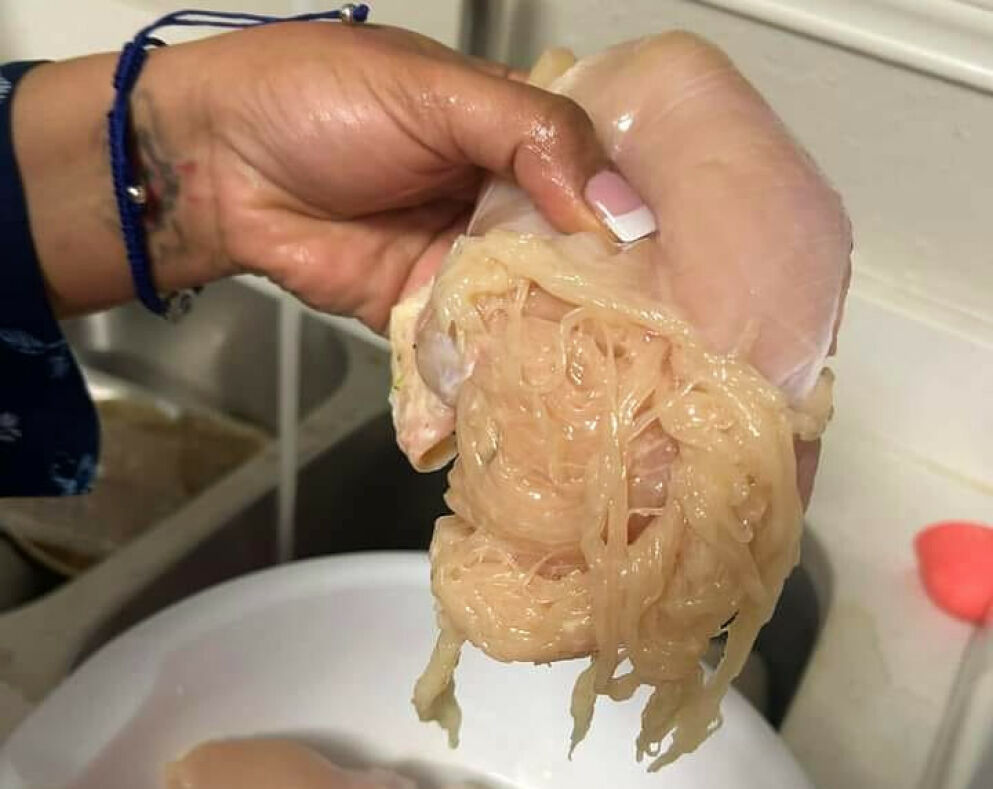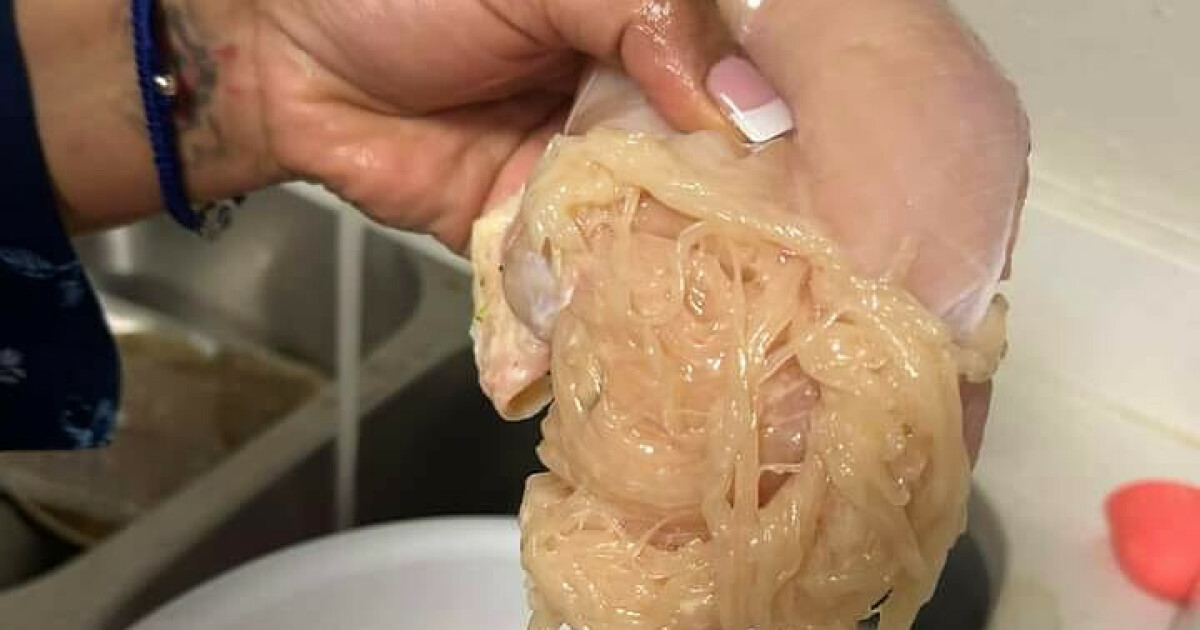A mother of young children had an unpalatable surprise in her kitchen, and now her photo is going viral.
«I’ve been debating whether or not to share this photo, but since I had to see this, you do too.»
This is what American Alesia Cooper wrote in a post that is now spreading on Facebook.
Attached is a picture of a very unusual chicken breast.
The woman from Texas explains that parts of the chicken breast suddenly transformed into something resembling noodles or spaghetti.
«I was making dinner for my kids a couple of weeks ago and washed the meat as usual. When I started to cook, this happened. Lol,» she writes.
The post is spreading online, and at the time of writing, nearly 4,000 people have commented on Alesia Cooper’s post, and it has been shared 12,000 times.
Many are speculating about what on earth happened to the chicken breast.
Despite the fact that hormone treatment of chicken is banned in many countries, including Norway and the USA, many are convinced that steroids are to blame.
– Really Gross
Here are some of the comments Alesia Cooper has received:
«Chicken doesn’t taste the way it used to. It makes me sick. I have no idea why because I used to love eating chicken.»

«Yuck! That is really gross.»
«This is because of the steroids they give them to make them grow too fast.»
«This is why I don’t eat meat!»
«Makes me want to throw up. I will never eat chicken again.»
«That’s it – I’m going vegan from here on.»
Many point out that the chicken she shows in the photo has «woody breast,» also known as WB.
«This poses no risk to health or food safety, and the welfare of the chicken is not adversely affected,» National Chicken Council (NCC) claim.
WB causes huge economic losses for the poultry industry, according to agronomy professor Shai Barbut.
«It is estimated that the myopathies cost the global poultry industry over one billion dollars in direct and indirect costs,» he writes in a research report on the agronomy website Engormix.
The NCC informs that the poultry industry in the USA sponsors four different research projects to find the answer to why WB occurs in chickens.


